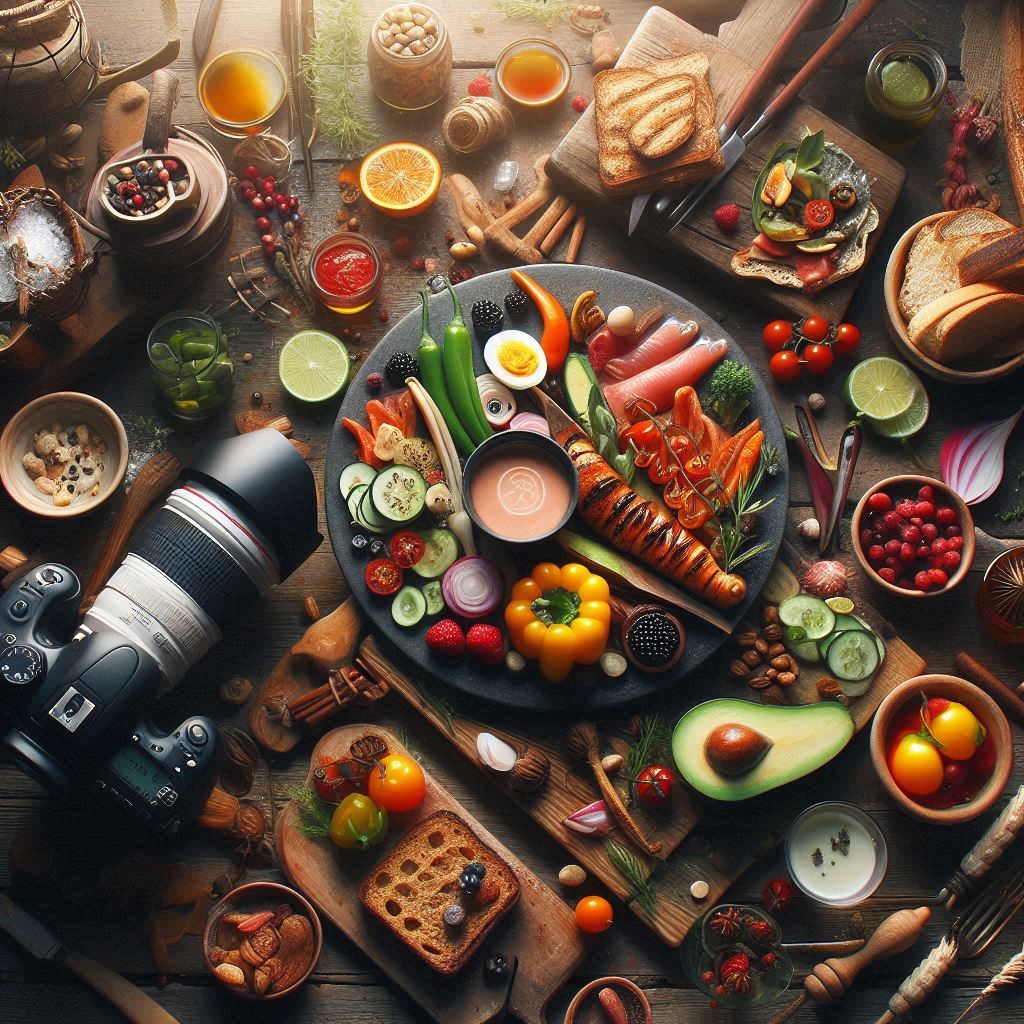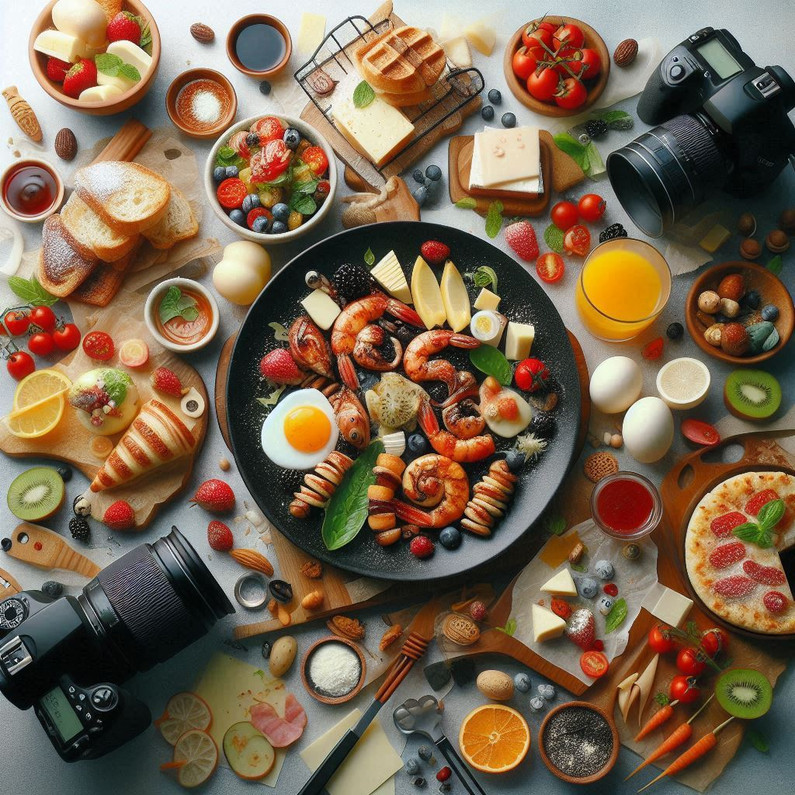"Feast for the Eyes: Mastering the Art of Food Photography"
"Feast for the Eyes: Mastering the Art of Food Photography"
Food photography has become increasingly popular over the years, especially with the rise of social media platforms like Instagram. Whether you're a professional photographer or just starting out, capturing beautiful and appetizing food images requires some skill and technique. Here are some tips for creating great food photography:

- Lighting: One of the most important factors in creating great food photography is lighting. Natural light is the best option for food photography, so try to take your photos near a window or in a well-lit room. Avoid using harsh overhead lights or direct sunlight, which can create unflattering shadows and overexposure. You can also use diffused light sources like a softbox or reflector to soften the light and create a more even exposure.
- Composition: The composition of your photo is just as important as the lighting. Think about the colors, textures, and shapes of the food and how you can arrange them in an appealing way. Consider the rule of thirds, which involves placing the subject off-center to create a more dynamic and balanced image. You can also experiment with different angles and perspectives, like shooting from above or at eye level, to add depth and interest.
- Props and backgrounds: Adding props and backgrounds can enhance the mood and storytelling aspect of your food photography. Choose props that complement the food and add to the overall aesthetic, such as utensils, plates, napkins, and fresh ingredients. For backgrounds, you can use simple textures like wood, marble, or concrete, or create a scene with other items that fit the theme or mood.
- Editing: Editing is a crucial step in bringing out the best in your food photography. Adjust the exposure, contrast, and white balance to correct any lighting issues. Use selective adjustments to enhance the colors and details of the food. You can also experiment with different filters or presets to achieve a specific style or mood. Just be careful not to over-edit, as it can detract from the natural beauty of the food.
- Practice and patience: Like any skill, creating great food photography takes practice and patience. Experiment with different techniques and styles, and don't be afraid to make mistakes. Take your time to set up your shot and make sure everything is in place before taking the photo. And most importantly, have fun with it!
In conclusion, food photography can be both challenging and rewarding. By paying attention to lighting, composition, props and backgrounds, editing, and practice, you can create stunning images that showcase the beauty and deliciousness of food. So grab your camera and start snapping!
17th Jun 2024
Recent Posts
-
Order the Best Boss Day Gifts for Male & Female Bosses in the UAE from Craftihouse.com
Every year, Boss’s Day is the perfect opportunity to show appreciation for the people who lead, ment …13th Oct 2025 -
How This Gift Came to Life: The Story Behind Our Palm Leaf Baskets
How This Gift Came to Life: The Story Behind Our Palm Leaf Baskets In a world where everything is be …8th Oct 2025 -
Handmade Leather Key Chains – Timeless Souvenirs & Everyday Companions
Handmade Leather Key Chains – Timeless Souvenirs & Everyday Companions Introduction In a world where …25th Sep 2025




